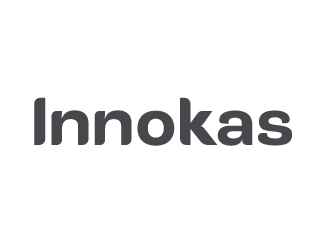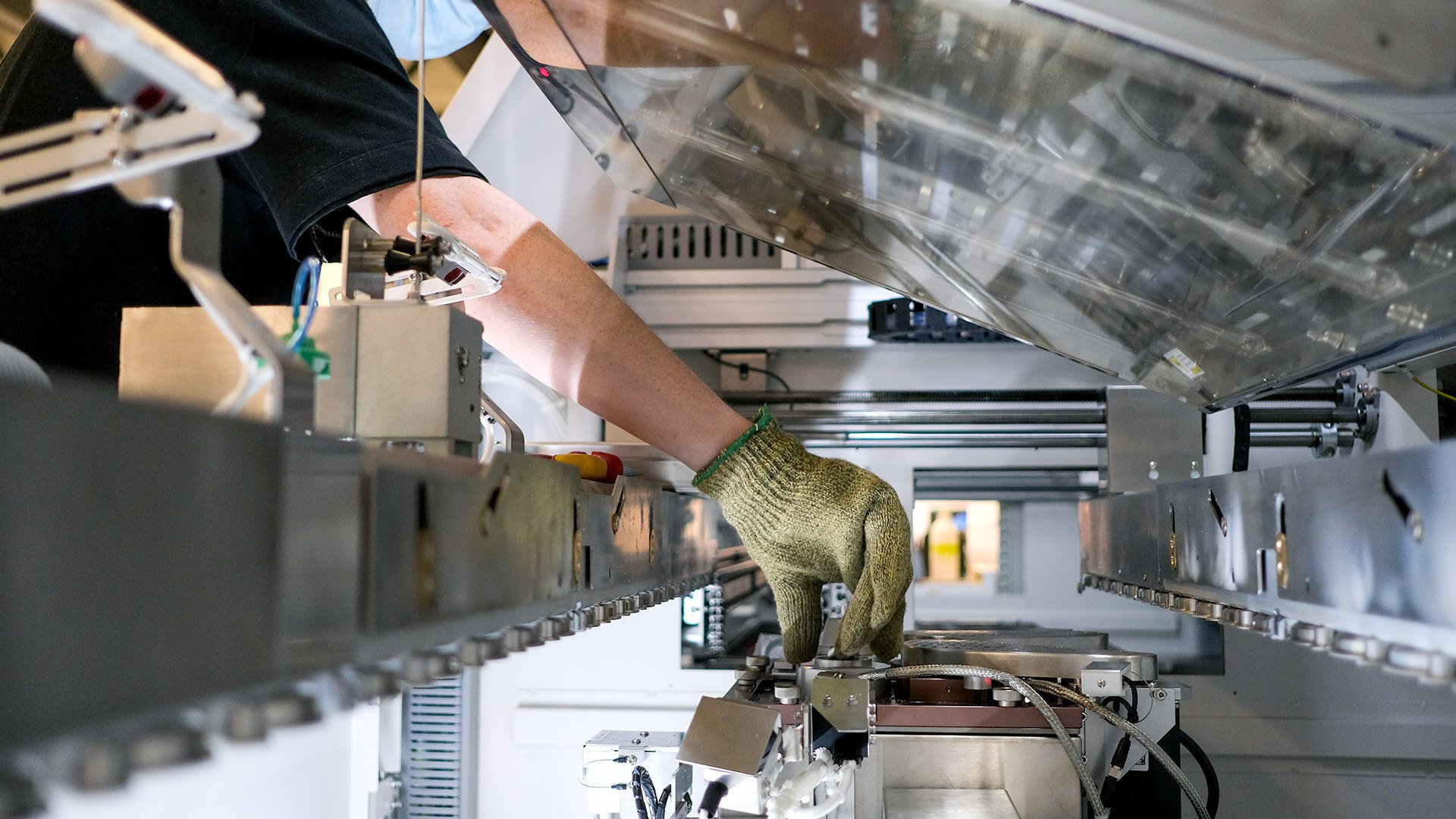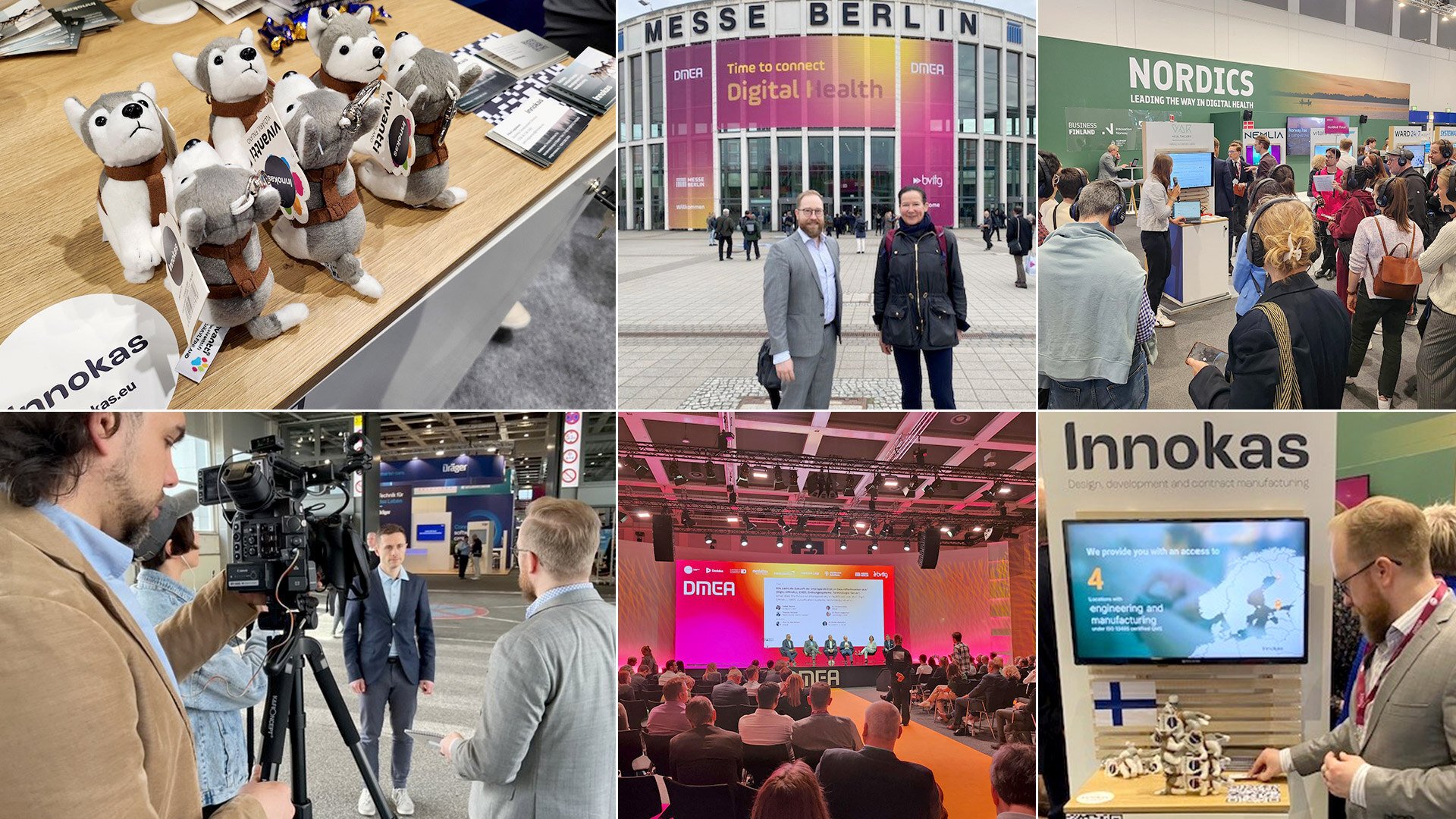Scaling the production of a complex smart device from design to mass manufacturing is a critical step, particularly for safety-critical technologies. What are the key considerations for successful scaling from the design all the way to production? Mikko Kangas, Business Development Director at Innokas, brings over 20 years of hands-on experience in navigating the complexities of production scaling. In this blog, he shares his checklist to overcome the challenges and scale your devices production with confidence.
Common challenges in scaling production
Despite careful planning, several challenges frequently arise when scaling production:
- Material delivery times can be long, which makes purchase of smaller, more expensive batches necessary. This can be remedied with monthly production forecasts.
- Unexpected volume increases may occur if production forecasts are outdated or nonexistent, often due to material availability issues. Strong cooperation between sales, distributors, retailers, and operational teams accounts for these risks.
- Final testing can become a bottleneck, with duplicating or acquiring additional testers often taking longer than expected. Early error correction can reduce the risk significantly.
Accounting for these various challenges begins already from the design phases.
Design for scalability
Planning for scalability should begin at the design stage to avoid costly surprises down the line. Whether you're dealing with printed circuit boards (PCB) design, mechanical parts, or the entire production process, a forward-thinking approach can take your production scaling far.
Key design considerations:
PCB Design: With PCB design, the testability of the board should be a factor early on. As production volumes increase, you should minimize manual steps as much as possible, though with complicated smart devices, manual assembly will play a significant role throughout.
Mechanical parts design: Similarly, when you design mechanical parts, the choice of manufacturing methods impacts scalability. For instance, every second counts with CNC machines, while injection molding demands careful consideration of surface quality and other specific requirements.
Visual quality documentation: Keep in mind that having all parties agree on the visual quality of the product reduces complaints and extra costs down the line. The shared standards ensure that the parties are aligned, and the likelihood of issues as production scales are reduced. Make sure that all parties have accepted the visual quality documentation before moving onwards.
Optimizations in prototyping and early production
Engage experts early: Engaging a production expert during the prototype stage is highly advisable. This allows for a thorough review of the final assembly process and life cycle studies of circuit board components before expensive changes can happen.
Involve subcontractors: Additionally, early involvement of subcontractors in cost-effectiveness studies can prevent later difficulties, as changes at a later stage can be complex or even impossible to make.
Automation considerations: While a higher level of manual assembly will remain as a cornerstone of complex device manufacturing, some automation will benefit production in the long run. One example is automated testing processes that improve efficiency and reduce costs.
Efficiency gains in production scaling
Simplified planning with increased volumes: As production volumes increase, planning tends to become more straightforward. Routine operations and consistent demand lead to improved efficiency, particularly when batch sizes grow.
Cost reduction opportunities:
Warehouse picking and machine set-up: Producing larger batches helps make tasks like warehouse picking and machine setup more efficient. You’ll be able to produce more without changing these processes.
Material management: Increased volumes will also simplify the management of purchased items and reduce the cost of the Bill of Materials (BOM). Larger delivery batches, annual contracts, and intermediate or consignment stocks can all contribute to lower material costs and shorter delivery times.
Benefitting from Lean principles
As production volumes increase, the application of Lean principles becomes a significant benefit.
Key Lean strategies:
Process measurement and bottleneck identification: This includes measuring and clocking processes, identifying bottlenecks, clarifying procedures, and ensuring unambiguous operating methods.
Continuous improvement: Removing constraints and committing to continuous improvement not only boosts efficiency but also reduces errors down the line.
Quality assurance and automation
Quality assurance must scale alongside production. As volumes grow, advanced techniques like AI-driven camera inspections can be employed to maintain visual quality. Sometimes it’s possible to integrate robots and other automation technologies into assembly and final testing processes, but these investments should be evaluated on a case-by-case basis.
Additional strategies for effective scaling
Implementing a few key strategies can make a significant difference in managing production scaling:
- Monthly production forecasts should be extended far enough (12-18 months) to ensure the timely availability of long-lead-time items at competitive prices. Regular updates to these forecasts are crucial for optimizing material buffers.
- Early error detection in production processes minimizes extra costs. Investing in circuit board testing and material acceptance checks can prevent issues from escalating.
- Geographical proximity of production facilities reduces risks, enhances communication, and eases problem-solving.
Conclusion
Scaling production requires a comprehensive approach that starts with design and extends through the entire production process and supplier chain. By addressing potential challenges early and implementing effective strategies, you can scale efficiently while maintaining quality and controlling costs. With extended production forecasts, investing in error detection early, involving production experts and subcontractors from the start, utilizing lean principles and considering the geographical proximity of the production facilities, you can begin to scale your operations efficiently.
To learn more, contact us through this form below and we will discuss how you can best anticipate the challenges of production scaling.
Consult

Mikko Kangas
Business Development Director











